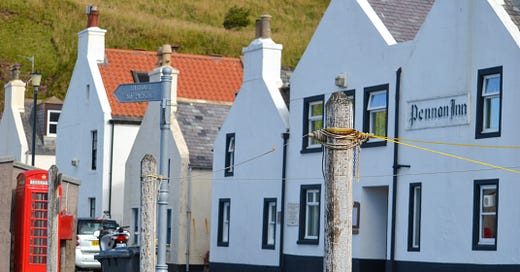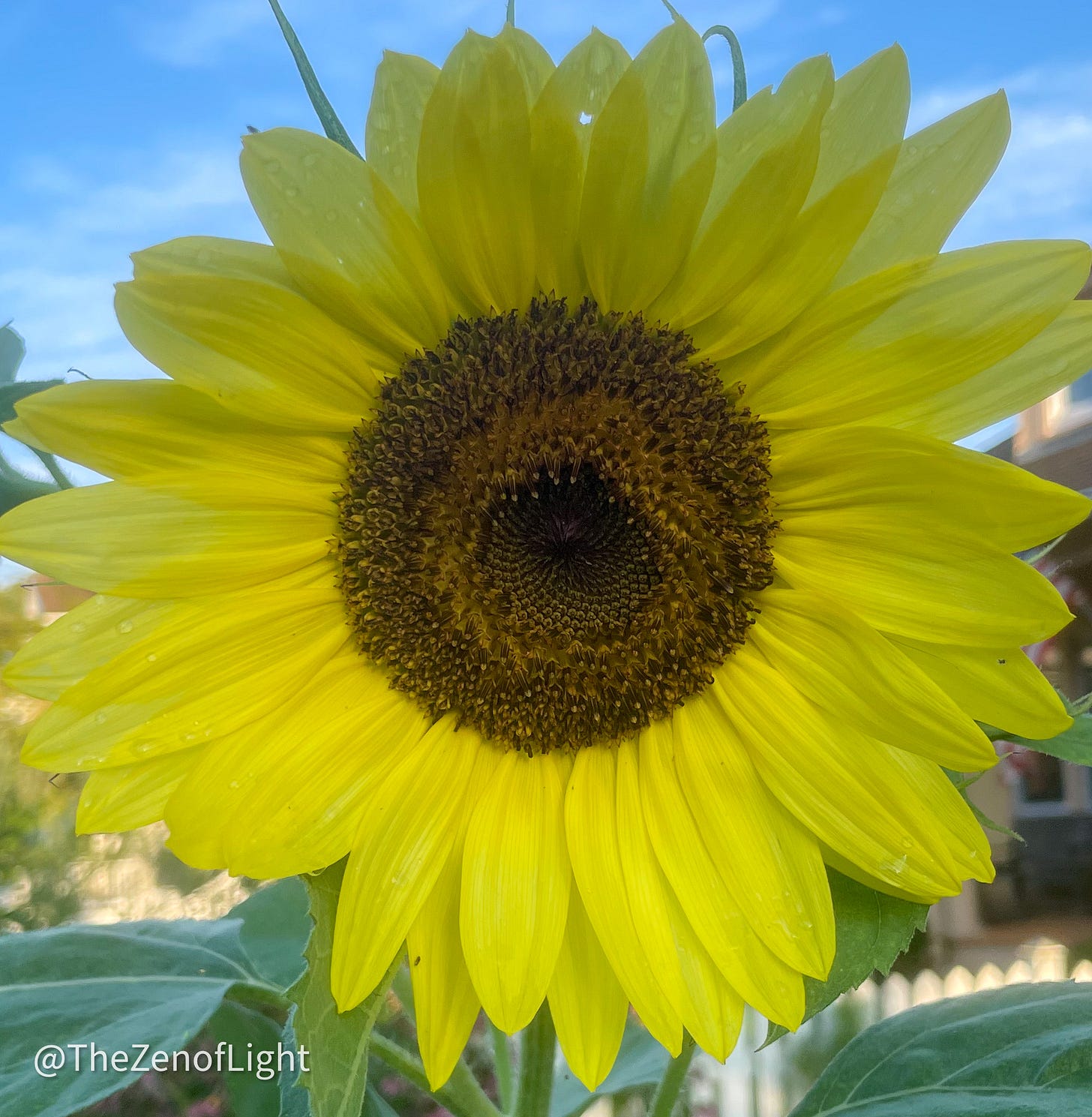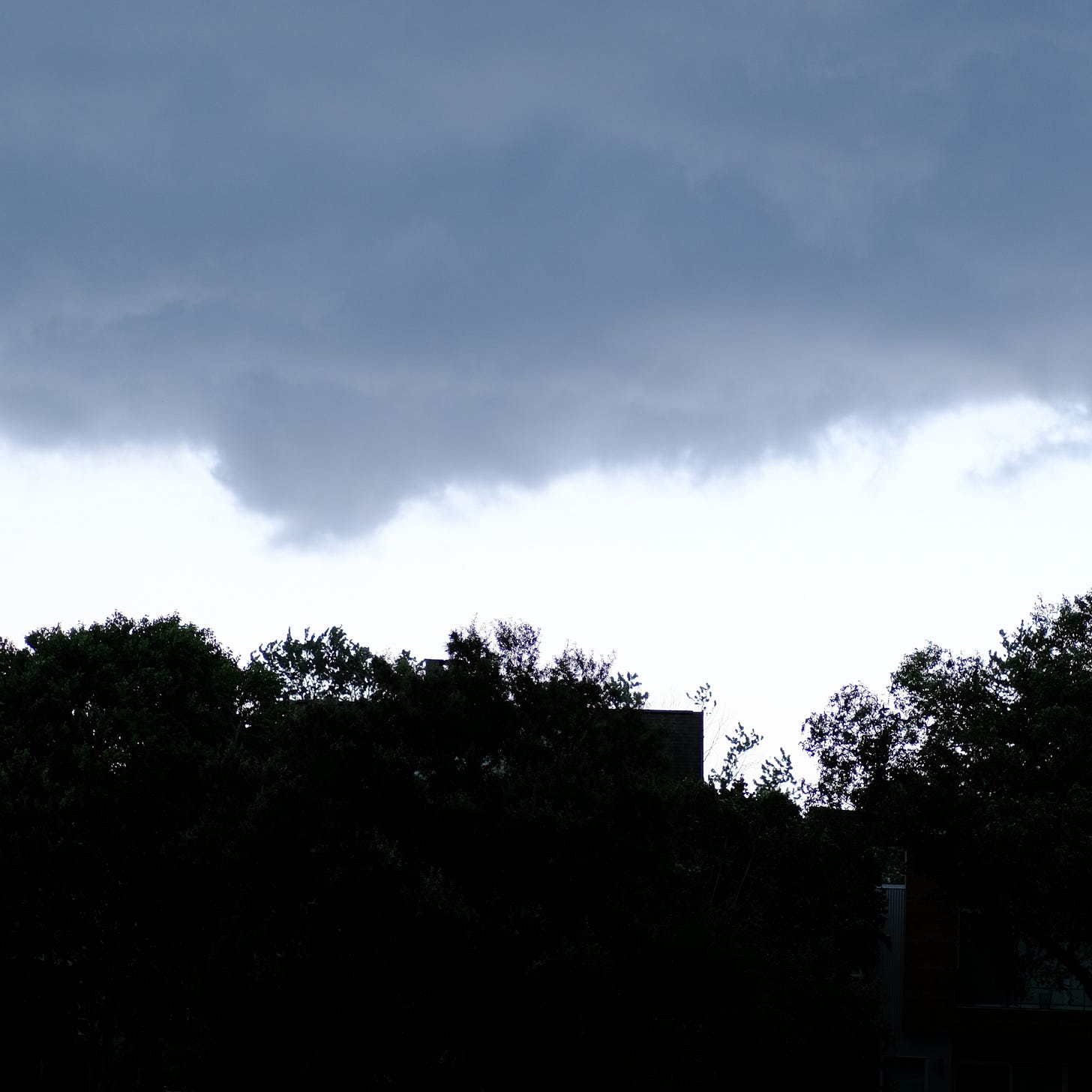We live in a two bedroom unit with our couch facing the balcony looking east as you know from my sunrise photographs. There is, as I type, a ridiculous 5 (FIVE) engine speed boat going towards the Compromise Street draw bridge linking Eastport (founded 1664) with Annapolis (founded 1649). I hope no one is in his way when he revs up as that is pretty dangerous power for this waterway.
We walked early today as the heavy rain last night cleared out some humidity but not the heat. There were a couple of pretty flowers along the way but that was hours ago. Eleanor Roosevelt is still on the back of the couch as the years are taking their toll on her. Sleep 23 1/2 hours daily is increasingly her norm. Harry Truman guards the dining room table as he dreams of more visits to the balcony though he can’t decide between either going out or staying in so he too often straddles the sliding door opening. In other words, it’s been a satisfying day indoors so far.
A few minutes ago my husband started streaming something but I couldn’t initially identify it. Then suddenly it brought back an absolutely delicious memory of another summer eight years ago.
It was our first trip to Scotland together, a haven of mine for nearly 44 years. I first visited the Kintyre peninsula in late November 1979 when I met a woman legendary in our family. Her name is Jean. She had the fortune (probably felt like a misfortune at first) to sit next to my aunt who was doing her non-conformist thing in a galaxy far far away when this all began.
Frieda was second of the Watsons in her generation, a redhead and unquestionably smart even though the family neither had the money for her to receive an advanced education (today’s youth want relief from their college loans but don’t understand loan availability is a pretty recent option) nor did women automatically go to college. Instead, Frieda began working during World War II, then kept her job until she was laid off in 1953.
Being a self-sufficent, single Midwesterner, she decided to go to Scotland where the family lore said Watsons originated. She collected all her pennies, booked a passage on a liner, and set off. One of her proudest moments ever was that she walked down the red carpet at Westminster Abbey a few weeks after the Coronation. She also decided to train north.
I never asked her much about how she prepared for the trip. As a youngster, her family packed her off to Colorado in the early 1930s because Frieda developed tuberculosis. Moving a person to drier, fresh air was a cure, especially a poor family (as I discussed on Father’s Day) during the Depression. Her time there provided Frieda an invaluable self-confidence even if it deprived her of what turned out to be some of the final years of my grandmother’s life. But Frieda was self-sufficient (except for never driving) and intrepid for her whole life. Getting around Scotland never would have unnerved her but I don’t know exactly why she was on the bus from Glasgow to the west. I am not sure she even knew where she was going that afternoon.
She sat next to a young nursing student from a hamlet in Argyll, the aforementioned Jean who was headed home for a holiday. Frieda never missed a chance to chat (she was an American through and through) so, Jean acknowledged to me in 1979, the undesired (for Jean) conversation began. Jean had that sense of gratitude so many had in Britain after the support we offered during World War II so she thought she should respond to the questions directed her way. Four hours and many stops later, Frieda disembarked with Jean at the village of Tarbert, adding an unexpected stop on Frieda’s itinerary to whatever else she planned. She and Jean became geographically distant but deep, enduring friends. These women wrote long epistles to each other.
Jean became a nurse but working for decades as a housekeeper for various grandiose big homes along Kintyre after marrying Duncan, the gardener on the laird’s estate in the hamlet near Tarbert. They rented the rather pretty single family home up the hill from the Laird. The hamlet had a single shop, a small elementary school, a Church of Scotland, a few houses, and scads of sheep.
Frieda visited a couple of times but wasn’t wealthy so trips were pretty far apart. When I embarked on studying in London in 1979, she advised Jean I would probably look them up. I was determined, truthfully, to go see this place I heard so much about. They sounded like nice folks but I really wanted to see Scotland so they could have been axe murderers (well, maybe not that bad but I was eager to get there).
I fell in love with the place, the view, the hamlet and, especially the family. They had a son, Brian, so he drove me all over Kintyre such as to Macrihanish where his younger sister rode horses with the two McCartney sisters, Mary and Stella. We saw the Mull of Kintyre and could see Ireland across the channel. We all sat by the fire at night except when they took me to a ceidhli, a dance, where I learned lots of assumed Irish surnames in the United States were also Scottish and Scots men always take their Scotch with a chaser.
Later I visited Brian in Glasgow several times and got to know his landlady, an irascible Scots woman from Perthshire whose accent was impenetrable for the first two visits. I did, unfortunately, get the point when she told me in no uncertain terms that my honey-coloured corduroy skirt, black stickings, and saddle shoes were absolutely appalling (sheepishly, I threw them away as I realised they were beyond appalling. Mercifully, I had literally worn a hole in the shoes so that was the proximate reason I used for binning them). In short, my multiple visits to the hamlet, to Glasgow, Edinburgh, and many points in between were some of the warmest hospitality I have ever felt.
But that is Scotland. Almost simultaneously, I got to know an English woman married to a Scot living in Saline outside of Andrew Carnegie’s city, the long ago capital Dunfermline. This lady and her husband welcomed me ‘home’ more times than I can count, taking me to see Fife, St. Andrew’s, Edinburgh, the local (pub) before it closed, PItlochry, and more places than I shake a stick at. Adrienne’s garden is amazing. John’s delightful interest in history is such a treat. Their unparalleled hospitality showed me that Scottish welcomes were not at all what my London friends warned me about in advance of my first visit in 1979 when they opined I should prepare myself for the awful prospect I’d be forced to eat haggis, the national dish.
Haggis, in case you’re unfamiliar with it, is conceptually a bit tough as the boiled lining of the stomach containing heart, liver, suet, and oats, is not our typical sought-after American meal (no, we eat hot dogs which are leftovers from other parts so we ought be less critical of others but that’s a topic for another day). Lo, all those years back when I still ate meat, I did eat haggis in Kintyre when called upon once in a while but I also had magnificent fresh shortbread which more than compensated in my book. In Saline we have had magnificent meals together as well.
Had it not been for Frieda’s tales about Scotland would I really have made the effort when everyone else I studied with went to the Continent? I never left the U.K. during my year there while everyone else went to places across central and western Europe. A couple of Latin Americans tried to get me to go with them to the Moscow Olympics in 1980 but I had to explain multiple times that was not what I wanted to see.
I had friends in east and west Scotland so I could not wait to get my partner there when he wanted to go. He spent his career in the Pacific so he had been only to England on two rapid fire trips a few years earlier. As established, Scotland is not England. We decided in 2015 to rent a car to introduce him to this glorious area, meet my friends, and—selfishly—expand my list of spots I’d visited.
He turned over the preparations to me. We bought a paper map with detailed road listings (the quality of roads varies dramatically in that country as we found out). We decided on our first trip we’d do what I called the eastern ‘lobe’ fo the country, beginning in Fife, tracing the coastline through Montrose, Aberdeen, Fraserburgh, along the northern coast to Inverness. We were both still working so it couldn’t be a six week trip.
I had never driven that area so I rather randomly chose bed and breakfasts that I guessed a decent day’s driving distance. I knew he wanted to have time to do watercolour painting along the way if something took his fancy. I chose a place outside Montrose that looked ok. I next chose something along the north coast but I really did not know that area at all and it’s hardly a tourist mecca until you get west to Culloden or Inverness where we’d do one night. We knew we’d come back to Saline near Dunfermline for our final evening before flying back out.
The first day’s drive went from dark clouds (which will remain the excuse for why I drove the wrong way down the street for a block, virtually the only time I’ve done that in all my years driving in Scotland.) Within an hour, the splendour of sunlight hitting the water accompanied us. We found each of the fishing villages along the coast had a fascinating history, something to paint, and somewhere for refreshments. It was a superb day, in other words.
The place near Montrose was an unexpectedly modern farm house. The woman welcoming us was a bit gruff but it was late afternoon on a working farm so I suspect she’d had a long day. All was well until she told us she expected cash. Um, ok. We did not see that on the listing so we lit out for a pub near an ATM. The first one was a bust but we finally found one in Montrose itself, offering the chance to try a different Scotch variety.
Next morning was every bit as lovely as we spent a nice time in Stonehaven which seemed remarkably untouristy but full of locals enjoying summer temperatures and sunshine. Aberdeen proved impossible to find somewhere to eat (yes, it is a big city but we took every wrong turn possible, I guess). Fraserburgh was smaller and quite pretty. I think we stopped for tea but we still have a drive ahead so we did not dawdle.
I neglected to mention that I was driving a stick. I loved it. I mean I love stick shifts. It feels like you’re in control and most people in the U.K. still drove them (may do now) so I felt more like a local even though my husband was worried it was so much extra work. I was doing all the driving because it turns out one cannot rent a car in the U.K. if one is 70 years old but I really did not mind.
We had to get about an hour beyond Fraserburgh that night because our reservations were in a place I arbitrarily chose on the map, Pennan. I knew nothing about it but had prepaid for the room so we departed main roads for ever smaller roads as the North Sea loomed larger.
Then I saw the sign. Sharp grade and windy road. Wonder what they mean by that? Well, it’s a sharp drop with a narrow road. All of which is fine if you are the only one on that road at that moment.
We got to the bottom of the road, then the strategist in me kicked in. Wait. We are only here for two nights—i have to get back out of here on that road which I think was about a 30% grade. What if we meet someone else on that road? What if I burn out the clutch (even though I have never burned out a clutch in decades of driving)? What if….
We hadn’t even found the hotel yet. That part actually turned out to be simple as Pennan is the ultimate one street town hemmed in by nature with the cliff we drove down on the south, east, and west while the North Sea lapped the road. There was a single hotel and, far as I could tell, no where to eat. What had I done? It was not a good question at about 8 pm with the narrow roads meaning Inverness was at least 90 minutes away. Oh, dear.
We parked the car in one of the spots along the shore line, then started towards the hotel with hopes they had a restaurant or pub snacks or something. Well, we did have a bed…
Something—I honestly don’t know what—stopped me: whoa. I have seen this place. I don’t know how but this looks really familiar for some reason.
Maybe it was the red phone booth although Britain had thousands of them in my time there.
I had no idea and would not have known the name Pennan. But it was the village where the 1983 film Local Hero transpires. If you are lucky enough to have seen it, Burt Lancaster and Peter Reichart as the nasty American greedy petroleum guys want to buy the town to destroy the gorgeous area for its resources. The townspeople rather want that too until Reichart decides to do the right thing, thwarting the entire plan. A classically American movie but one my graduate school friends and I found tres joile as we avoided something else we should have been doing. I had somehow dropped a pin on this charming village we had both seen on film thirty years earlier. What a coup, Cynthia.
But, that grade to get out of there? What if I come across another car coming down as I round that tortuous bend between buildings?
The hotel had a plaque about the movie along with a small bar and restaurant. The owners were a Bangkok-born immigrant and her Scottish husband. They moved back to Pennan about 2010 to run the hotel. It operated like a huge bed and breakfast so it met our needs.
We walked the street multiple times the next day. There wasn’t actually much else to do. Pennan lost its livelihood as fishing disappeared along that coast gradually in the late 20th century. (Why do these people think they should be independent? What would be the basis of a sovereign Scottish economy? Still wondering and certain did back then) There were a few holiday rentals but Scottish summers can be notoriously cold so they weren’t always rented. My husband painted, we walked, and it was a thoroughly delightful break from the driving.
After breakfast the second morning, I conquered the hill easily. We got to the top of the cliff where the tertiary road joined the secondary road. I got out to admire my work before we set off for Inverness where we spent a delightful evening before heading back to Saline to spend one more marvelous night of Scottish hospitality.
Our dinner that final night was with my old friend Brian and his wife who live near Dunfermline as well. Yet another loss for the hamlet, he studied surveying which wasn’t the type of employment the Laird could provide so Brian had long departed the place I fell in love with in 1979. They were fascinated by Donald Trump who we assured them could not possibly become president….
Jean and Duncan are in their 90s now. Frieda sadly is no longer with us. Yet that chance meeting on a bus when Jean felt obligated to be nice pulled me into a place that I (nor my husband) cannot relinquish because of curiosity and welcoming so we somehow discuss going back year after year. COVID interrupted a couple of years but it’s truly our ‘go to’ summer holiday.
He is already anxiously plotting next year. The industrial actions across Britain over the past 15 months spoiled our visit last year and a hoped for trip last month (and was far worse the country, of course) so we are moving out on a great catch up trip in 2024.
We’ve done Pennan so even when he streamed the credits for Local Hero this afternoon, we won’t stop there again. A couple of other places like Mull we haven’t been but primarily there are people who are vital in my life who I want to check on after this past couple of years of craziness.
Actions create consequences. Don’t ever forget that, even in your most fond experiences. Oh, and do go to Scotland. It’s magical as I so long anticipated.
If you haven’t guessed, some of my columns take me three hours. Those of you who subscribe mean so much for that reason among others. As it turns out, the rains returned with a vengeance as I started editing. Here is the late afternoon sky. Be well. FI
N
‘The Road to Pennan’, retrieved at https://ramblingroadsscotland.wordpress.com/2021/12/28/the-road-to-pennan/







Local Hero remains one of my favorite movies . Mark Knopfler’s soundtrack is magical and captures the spirit of the land as your words do as well!